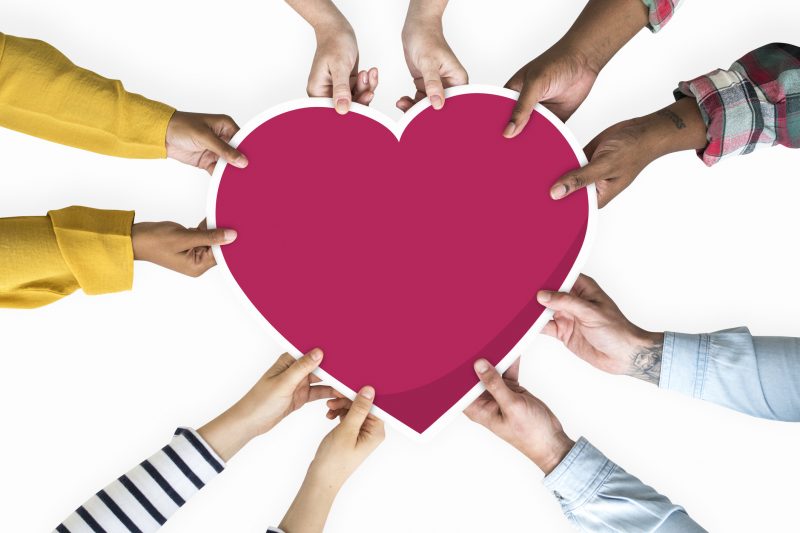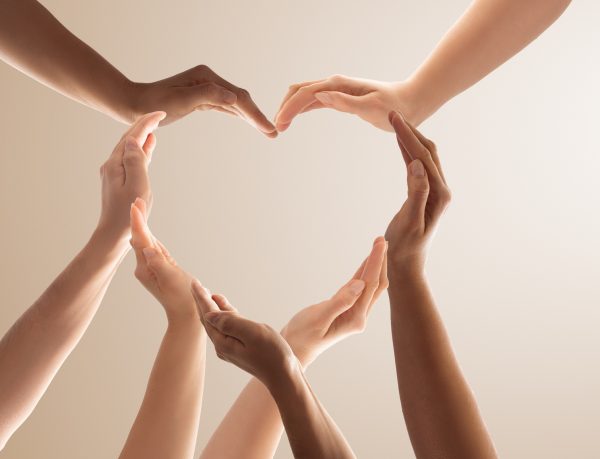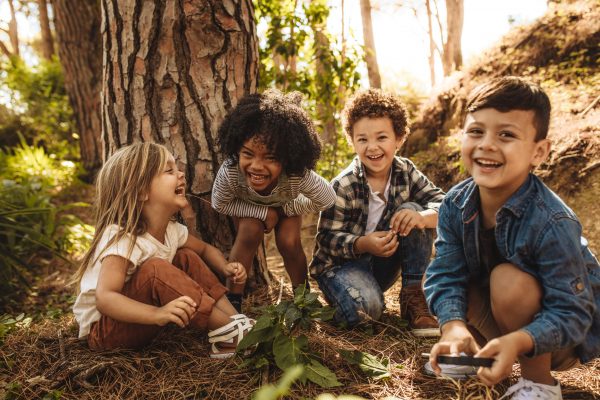 Trying to navigate conversations with children about race and diversity can be tricky. But they are important conversations to have.
Trying to navigate conversations with children about race and diversity can be tricky. But they are important conversations to have.
“Kids need to be able to have frank conversations about the world we live in — period,” said Dr. Geoffrey Putt, a pediatric psychologist at Akron Children’s. “It’s not so much that now is any different. The conversation about race has always been important. That’s how we overcome and improve as people and as a country.”
Whether it’s talking about sex, race or gender inequality, these issues are difficult to discuss, but important to discuss — even if you don’t have all the answers.
When it comes to race, parents don’t need to go into graphic details about a murder or windows being smashed. We don’t want to scare kids, but we want them to know people should be treated as individuals and with respect.
To gain some insight on how parents can best jumpstart these important conversations, Dr. Putt and Carole Becerra, Akron Children’s director of inclusion and diversity, provide some guidance. After all, articulating the problem is the first step in solving it.
Parents should talk to kids about racism, no matter their age
“Children learn about racial differences early on and learn from their first teachers — their parents — about how to react to these differences,” said Becerra.
Babies as young as 6 months can recognize racial differences, such as skin color. Kids ages 2 to 4 can internalize what they’ve learned about racial bias and kids ages 5 to 6 show similar racial attitudes as their parents. By the time kids reach age 12, many have become set in their beliefs.
Conversations should be ongoing and not just a one-time occurrence. Silence about race teaches children it’s wrong to discuss it and can lead to racial biases later on.
“That’s why it’s very important to talk about race, social justice and what’s right, what’s wrong from an early age,” said Becerra. “Just like we teach our kids how to cross the street or use their manners, it’s the same concept to me. We just need to make sure the conversation is developmentally age appropriate.”
 How to begin the conversation
How to begin the conversation
Every family is different, bringing different backgrounds and social situations to the table. But no matter the situation, a conversation about race can begin to lay the groundwork for better understanding and acceptance of differences.
As parents, we first need to educate ourselves in order to set a good example for our kids. Once we have a knowledge base, we’re much more likely to talk about race to our children.
Early exposure through books, movies or television is a great tool for explaining concepts and teaching younger children how to treat others with respect and kindness.
Books such as “Not My Idea: A Book About Whiteness,” by Anastasia Higginbotham, and “Something Happened in our Town,” by Marianne Celano, are great places to start.
For school-age kids, it’s a good time to start open conversations about diversity and racism. Recognize differences and teach your kids it’s OK, even wonderful to have them, but it’s not fair to judge others based on their skin color or the language they speak. Also, you can discuss examples of racial biases in movies or television and ask your child how to make more positive choices.
When it comes to teens, because they are so connected to the outside world, it’s vital to have these important messages about inclusion come from the home, instead of school or social media. You can start the discussion by asking questions about what they’ve heard, their conclusions and how they feel. It’s a good chance to learn what your teen understands and wants to know about racial bias. Let your teen lead the conversation. Just be ready to correct them, if necessary.
Key points to cover
What you discuss depends on your family’s makeup and the community in which you live. Here are some good points to bring up.
- Talk about race itself. Discuss physical differences among people of different cultures and the positive aspects of being different. Let kids know it’s OK to observe physical differences, but it’s not okay to make judgments based on them.
- Define terms. Kids are going to hear words, such as protest, riot, racism. Teach them what they mean so they can better understand what’s going on in the world.
- Teach kids to see other perspectives. It’s important to teach your kids to “walk a mile in someone else’s shoes” to learn empathy. You can start by asking questions, such as “How do you think the situation would be different if he was respectful instead?”
- Discuss our nation’s history. Offer some history to lead the discussion. Talk about how schools and buses used to be segregated, or people of color weren’t allowed to vote. Teaching kids about our history shows them how far we’ve come — and how far we still need to go.
- Talk about privilege. Discuss how some kids raised in a certain environment have certain things afforded to them. Until you teach your kids about privilege, they can’t see it and can make believing racism exists difficult.
- Expose children to diversity. Through sports, television, arts and culture, you can expose your kids to many different races, backgrounds and religions. When kids are exposed to different cultures, they will see people as individuals. If your child has never met someone of a different race, they may take someone else’s word for what that person is like.
- Offer ways kids can make change. Tell kids they can make a difference by being kind to all people of all backgrounds. They can listen to and understand the experiences and feelings of those who may be different from them.
 Model the way
Model the way
Parents must first confront their own biases, so that their example is consistent with their messages of racial tolerance. Dr. Putt reminds parents of the famous quote: “Be the change you want to be in this world.”
- Don’t participate in — or laugh at — racist jokes. If you hear them, talk about it with your child and explain why it is hurtful.
- Model kindness. Show kindness and compassion when interacting with people of all racial and cultural backgrounds. Show your children through your actions what it is to be an honest, kind person and a good citizen.
- Challenge stereotypes. Treat others as individuals and don’t group people in a specific category. Give people you encounter a chance based on their personality and not what they look like or where they come from.
- Be aware of the words you use in your home. Your everyday comments and actions will say more than anything else.
- Admit mistakes. You’re human and make mistakes. When you admit the wrong, you’re setting an example for your child the very behaviors you want him to use to make the world a better, just place for everyone.
- Choose a wide, socially diverse group of friends and participate in multicultural activities. Encourage your kids to have a diverse group of friends, as well. Travel to different communities to help kids understand the diversity in the world.
Strategies to help kids deal with racial bias
“An important way to help kids overcome racial bias is to allow them to express themselves and talk about their feelings,” said Becerra. “Also, talk about ways he can rise above these challenges, and make it an ongoing conversation.”
Encourage your child to challenge racial stereotypes by being kind and compassionate toward others of all backgrounds. Also, be sure to remind your child about his support network and who he can turn to for help.
“Kids need to know we all have to fight for the right thing, for respect, to be treated fairly,” said Becerra. “It’s something that will do well for all of our lives.”
If you’re struggling to have the conversation with your children, Akron Children’s Lois and John Orr Family Behavioral Health Center can help. To schedule an appointment, call 330-543-5015.










